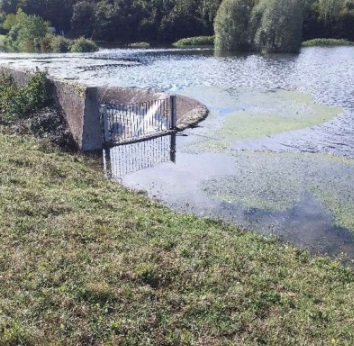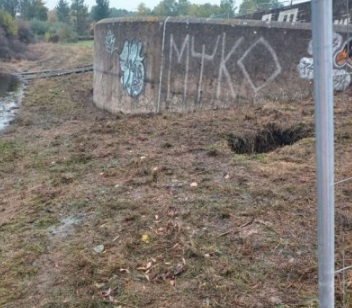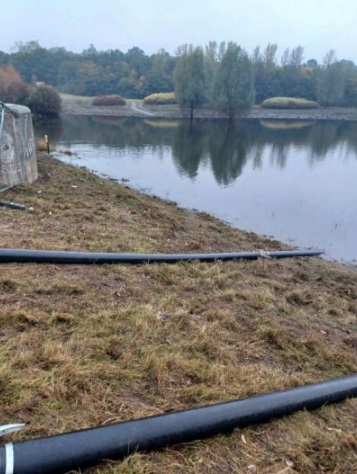Partial failure of outlet pipe leading to internal erosion in flood storage reservoir, exacerbated by a blocked debris screen
Publish date
28 October 2025
Case ID#
3345
Title
Partial failure of outlet pipe leading to internal erosion in flood storage reservoir, exacerbated by a blocked debris screen
Nation
England
Regulator reference no.
533
Legal status
Statutory
Reservoir type
Impounding
Reservoir capacity
100,000 - 499,999m3
Year of construction
1970 - 1989
Main construction type
Earth fill embankment
Dam height
5 - 9.99 metres
Dam flood category
A
Hazard class
High-risk reservoir
Reservoir use
- Flood risk management
Owner type
Limited company
Date & Time of incident
14 October 2024 - 12:00
Date incident closed
14 October 2024
Observations that caused the incident to be declared
- Slope or face deformation (slippage, cracking, slumps, mounds, depressions)
Describe the incident
Supporting photos


Natural processes which initiated or contributed to the incident
- Flood - within dam design capability
- Heavy/persistent rain (no flood)
What were the main contributing factors to the incident occurring?
Dam factors
- Deterioration of materials
- Failure or damage to pipes or culverts
External factors
- Damage by floating debris
Shortcomings
- Construction shortcoming
- Design shortcoming
- Surveillance shortcoming
What was the root cause of the incident?
Impacts on the reservoir
- Failure or damage to tunnel or culvert
- Internal erosion (adjacent to structures)
Supporting photos
Describe any human factors which influenced the incident
Describe any instrumentation at the reservoir and how this was used in warning of the incident or providing monitoring during the incident
Was instrumentation effective leading up to and during the incident?
Not Applicable
